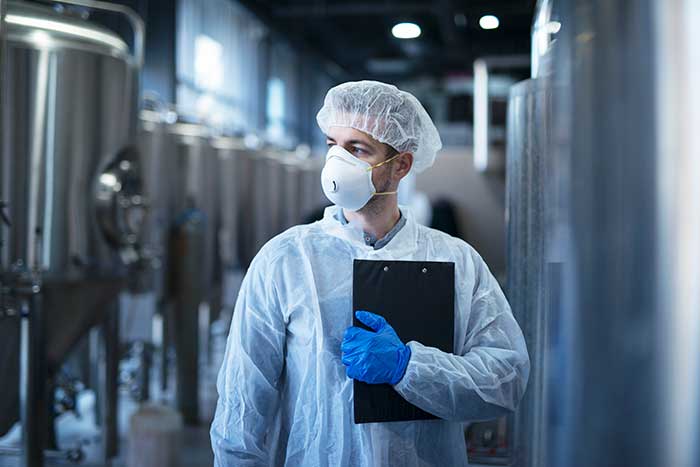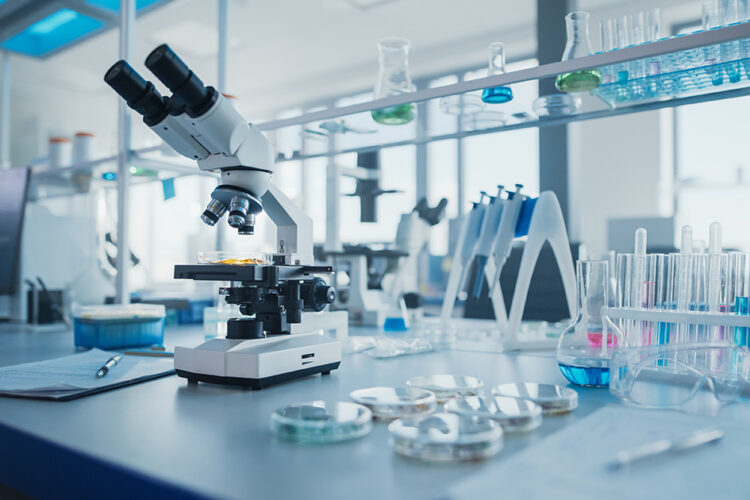
What is Industrial Hygiene? A Critical Component of Workplace Safety
When we think about workplace safety, we often picture things like fire extinguishers, safety goggles, or the proper use of machinery. But there’s a less obvious, yet equally important, aspect of worker health and safety—industrial hygiene. While the term might not roll off the tongue easily, industrial hygiene plays a critical role in preventing long-term health issues and improving overall workplace conditions. In this blog post, we’ll dive into what industrial hygiene is, why it’s so important, and how it helps keep workers safe and healthy.
Defining Industrial Hygiene
Industrial hygiene is the science of anticipating, recognizing, evaluating, and controlling workplace conditions or hazards that could cause illness or injury to employees. These hazards could range from chemical exposures to physical agents like noise, heat, or vibrations. Industrial hygienists focus on identifying these risks, assessing their potential impacts, and implementing control measures to protect workers’ health and well-being.
Unlike many safety practices that are more reactive (e.g., dealing with accidents after they happen), industrial hygiene is preventative in nature. The goal is to identify potential health risks before they cause harm, ensuring that workers are exposed to safe working conditions.
The Importance of Industrial Hygiene
Industrial hygiene is crucial for several reasons:
Prevention of Chronic Health Problems: Many workplace hazards, if left unchecked, can lead to long-term health issues. For example, workers exposed to asbestos or harmful chemicals may develop respiratory diseases, cancer, or skin conditions. Long-term exposure to loud noise can cause hearing loss, while repetitive motion can lead to musculoskeletal disorders. By addressing these issues early on, industrial hygiene prevents these conditions from becoming widespread problems.
Compliance with Legal Regulations: Governments across the globe have set stringent regulations to protect workers from occupational health risks. Compliance with these regulations is not only necessary for worker safety but also to avoid fines, penalties, or legal actions. Industrial hygiene practices help companies meet these legal requirements by regularly assessing and mitigating workplace hazards.
Cost Savings: Proactive industrial hygiene leads to long-term cost savings for businesses. When workers experience health problems due to hazardous exposures, it often results in high medical costs, workers’ compensation claims, and even lawsuits. By preventing these issues, companies can avoid significant financial burdens and reduce the potential for workplace disruptions.
Boosts Worker Morale and Productivity: A safe and healthy work environment directly contributes to employee satisfaction and productivity. When employees feel safe, they are more likely to be engaged and motivated. Moreover, reducing illness and injury-related absenteeism means that businesses can maintain higher productivity levels and avoid disruptions.
Key Elements of Industrial Hygiene
Industrial hygiene is a multifaceted discipline, and it encompasses several key elements to ensure comprehensive workplace safety. These elements include hazard identification, risk assessment, control strategies, and ongoing monitoring.
1. Hazard Identification
The first step in industrial hygiene is identifying potential hazards. These can be physical, chemical, biological, or ergonomic in nature:
Chemical Hazards: Exposure to toxic substances such as gases, vapors, dusts, fumes, and liquids can cause a wide range of health issues, from lung disease to skin irritation and even cancer.
Physical Hazards: These include things like excessive noise, vibration, radiation, and extreme temperatures, all of which can negatively impact worker health over time.
Biological Hazards: Workers in certain industries (e.g., healthcare, agriculture, or food processing) may be exposed to biological agents like bacteria, viruses, fungi, and allergens that can cause infections or allergic reactions.
Ergonomic Hazards: Poorly designed workstations, repetitive tasks, and heavy lifting can lead to musculoskeletal disorders, including back pain, carpal tunnel syndrome, and other chronic conditions.
2. Risk Assessment
After hazards are identified, industrial hygienists assess the level of risk they pose to workers. This involves evaluating how much exposure workers are likely to experience and the severity of the potential health effects.
For example, an industrial hygienist might assess air quality in a factory to determine the concentration of harmful chemicals in the air, or measure noise levels on a construction site to see if they exceed safe limits. Once the risk is evaluated, the next step is to determine how to mitigate it.
3. Control Strategies
Once risks have been identified and assessed, industrial hygienists implement control measures to minimize exposure. These strategies are categorized as:
Engineering Controls: These involve altering the physical environment to reduce exposure. For example, installing ventilation systems to remove toxic fumes or using noise barriers to reduce sound levels in noisy work environments.
Administrative Controls: These are changes to work practices or policies that reduce exposure. This might include job rotation (to limit the amount of time a worker is exposed to a hazard), scheduling hazardous work during times when fewer workers are present, or implementing regular breaks to reduce fatigue.
Personal Protective Equipment (PPE): In cases where it’s not feasible to eliminate the hazard, PPE is used as a last line of defense. This could include items like respirators, hearing protection, gloves, goggles, and specialized clothing.
4. Monitoring and Review
Industrial hygiene doesn’t end once control measures are implemented. Ongoing monitoring and review are essential to ensure that exposure levels remain safe. This might involve regular air or noise sampling, health screenings for workers, or audits of safety procedures. By continuously monitoring conditions, companies can make adjustments to maintain a safe working environment.
Examples of Industrial Hygiene in Action
To see how industrial hygiene works in real life, consider the following examples:
Chemical Manufacturing: Workers in a chemical plant may be exposed to dangerous solvents or acids. An industrial hygienist might assess air quality to measure the concentration of harmful substances and recommend better ventilation or more effective filtration systems to reduce exposure. Workers might be required to wear specialized respirators as additional protection.
Construction Sites: In construction, workers may face multiple hazards like excessive noise from machinery, exposure to dust or asbestos, and ergonomic risks. Industrial hygienists would assess these risks and implement noise barriers, dust control systems, and ergonomic training to protect workers from hearing loss, respiratory issues, and musculoskeletal injuries.
Healthcare Facilities: Healthcare workers are often exposed to biological hazards like viruses and bacteria. Industrial hygiene practices might include ensuring proper sterilization of equipment, assessing airflow in hospital rooms to minimize the spread of airborne pathogens, and providing personal protective gear like gloves, gowns, and face shields.
The Future of Industrial Hygiene
As industries evolve, so do the challenges and innovations within industrial hygiene. With the growing awareness of environmental concerns, there is increasing attention on reducing chemical exposures, promoting sustainability, and ensuring that workplaces are safe from emerging risks, such as exposure to new chemicals or infectious diseases. Advances in technology, such as wearable sensors to track exposure levels or AI-based safety monitoring systems, also promise to improve industrial hygiene practices.
Moreover, as workplaces place greater emphasis on employee well-being, mental health considerations are becoming part of industrial hygiene. Addressing stress, workload balance, and mental fatigue are just as important as managing physical hazards in today’s workforce.
Conclusion
Industrial hygiene is an integral part of workplace safety that goes beyond the visible hazards and focuses on safeguarding long-term worker health. By proactively identifying, assessing, and controlling risks in the workplace, industrial hygienists help prevent chronic health issues, reduce healthcare costs, ensure regulatory compliance, and improve overall employee productivity and morale.
Whether you’re working in manufacturing, construction, healthcare, or any other industry, industrial hygiene plays a vital role in ensuring that workers can perform their jobs safely without compromising their health.
Author
CIHP
Jay is a Certified Industrial Hygienist with over 22 years’ experience in Industrial Hygiene (Oil&Gas, Mine& Metallurgy, and Construction) and Asbestos Abatement




